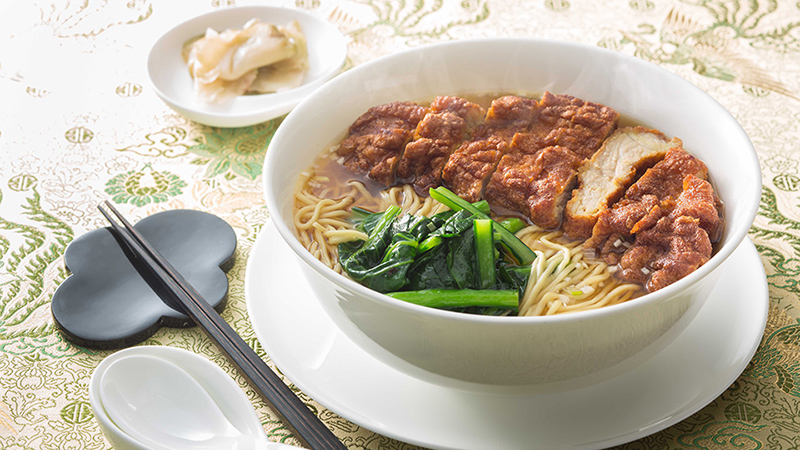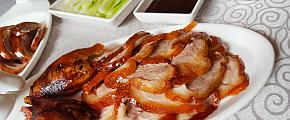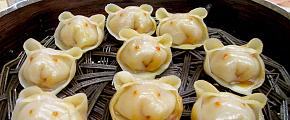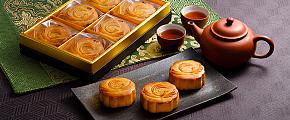Drinks and Snacks of China - Noddles
Noodles play an important role in Chinese food culture, especially in northern China, where they are an essential staple food. Noodles are a form of staple food very popular throughout China. They can be made by hand or machine and are named by the technique used in creating them. They can be formed as thin as threads, or as thick as ribbons, and they can be formed by stretching, rolling, or cutting.
Noodles (Miantiao)
As a prepared dish, they can be served warm or cold, in a soup, or served alone with a simple sauce. They are often dressed with chili oil, or eaten with fried bean sauce, pork, or chicken sauce. There are countless serving and cooking techniques. China has many varieties of "instant noodles", which are precooked, dried, and commercially packed. Before eating, all one has to do is soak them in hot, boiled water for a few minutes. They are very handy for a quick lunch in the office or on a journey, but no true epicurean would dream of eating them when fresh handmade noodles are available. As noodles are usually in the form of long strings, they are considered a symbol of longevity and are therefore indispensable at Chinese birthday parties and festivals.
 Noodles (Miantiao)
Noodles (Miantiao)
Two types of noodles stand out among the rest and require professional skills. The "hand-pulled noodles" are unique to China and can be made only by a trained chef. He prepares the dough by stretching it in his hands and, he swings it a few times to make it longer. Then he brings the two ends together and repeats the process until he has made a single noodle that can be thousands of meters long. An experienced chef can make a noodle that is thin as thread.
Watching a professional chef create these noodles is akin to watching a master juggler. Another form of noodle and one that cannot be made without years of experience is Longxumian (dragon bear noodles). Commercially they are available fried, so they are golden in color and crisp with a distinctive flavor.
"Dragon beards" are also hand-pulled but are made extraordinarily fine. It has been calculated that a piece of dough prepared with 1.5 kilograms of wheat flour can make 144,000 hair-thin noodles, each 0.17 meters long, which means a total length of 2 kilometers. In the beginning "dragon beards" were simply called "beards", but since they caught the fancy of an emperor, and as the dragon was the symbol of all emperors, they have come to be known as "Dragon beards".
"Bridge Crossing" Rice Noodles (Guoqiao Mixian)
This dish is a specialty from Yunnan Province. It consists of a bowl of pre-cooked plain rice noodles, a large bowl of rice and chicken (or meat) broth, and a plate of assorted paper-thin slices of raw pork, liver, and chicken with fresh and fresh vegetables. When these are served, the diner adds noodles, vegetables, and meat to the broth.
How did this dish get the unusual name of "Bridge Crossing" Noodles? Legend has it that a scholar in China's ancient past was jailed on an island in the middle of a lake and his wife had to cross a long bridge to bring him his meals. The food invariably became cold by the time she arrived at the prison. The woman strove to find a solution to this problem. She found that greasy chicken broth does not get cold easily, and so added it to a normal dish of rice noodles. The dish was so tasty, that it soon became popular. Because the man's devoted wife brought this dish across the bridge every day to feed her husband, it got the name "Bridge Crossing" rice noodles.
"Buddha Jumps the Wall" Noodles (Fotiaoqiang)
This is a dish that originated in Fuzhou city. It is made of a large number of ingredients: shark's fin, shark's lip, fish maw, abalone, squid, sea cucumber, chicken breast, duck, pork tripe, pork leg, minced ham, mutton elbow, dried scallops, winter bamboo shoots, Xianggu mushrooms, to name but a few. These ingredients are seasoned and steamed separately and then put into a small-mouthed clay jar together with cooking wine and a dozen or so boiled pigeon eggs. The jar is covered and put on a very hot fire for a while and then simmered on a slow fire. Four or five ounces of local alcohol is added into the jar, which is kept simmering until the dish is ready.
This dish is very labor intensive but well worth all the effort. It is a very special dish rarely found elsewhere in the world. The dish's origins are explained by a local legend. A Fuzhou scholar during the Qing Dynasty (1644-1911) went on a picnic with friends in Beijing's suburbs. He put all of the ingredients he had with him in an alcohol pot which he heated over a charcoal fire before eating. The attractive smell of the food was carried on the wind to a nearby temple. It smelled so good that the monks, who were supposed to be vegetarians, jumped over the temple wall to join the scholar's picnic. One of the participants of this event wrote a poem in praise of the dish, of which a line reads: "Even Buddha himself would jump the wall to come to try it". Whether or not this legend or true cannot be proven, but it does show how delicious this dish is.
What Our Clients Say
"Great Customized Service", "Trip of A Lifetime", "Exceed All Expectations"






